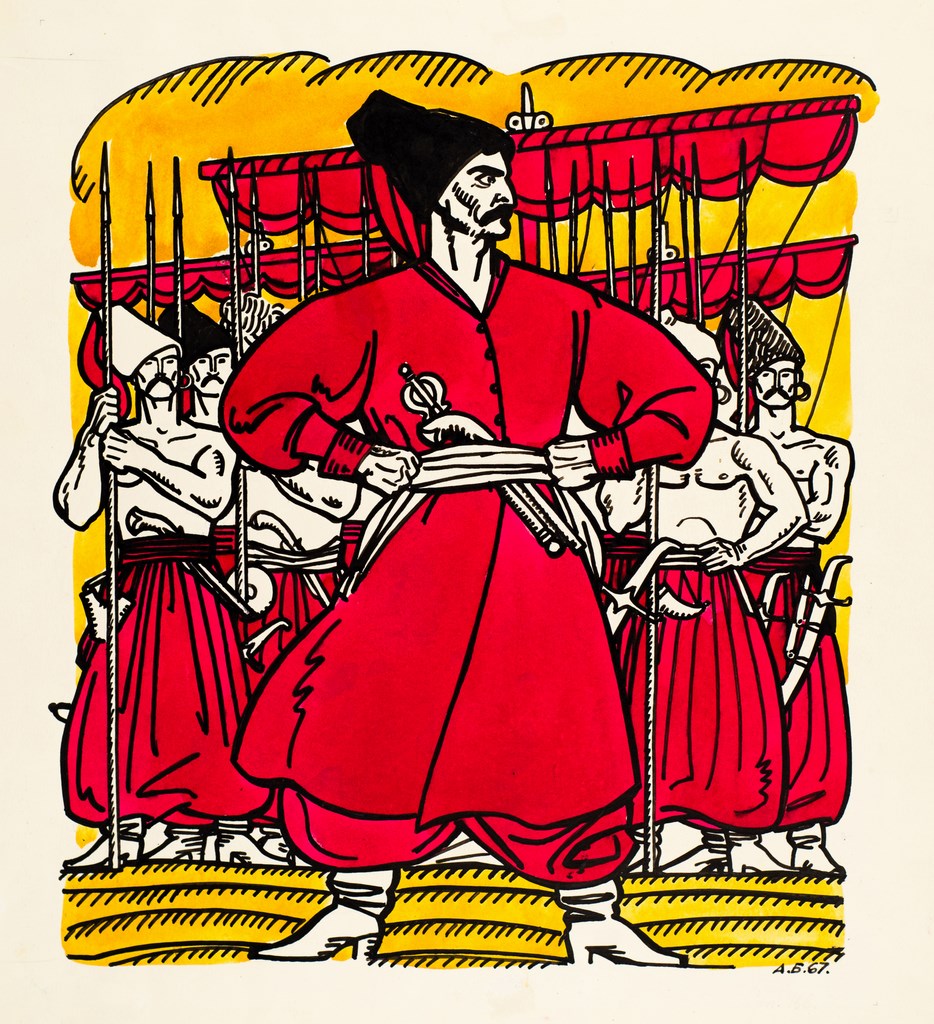The exhibition of “Aeneis”/ “Eneyida” project will open on August 24, Ukraine’s Independence Day, at the National Art Museum of Ukraine. The project deals with mock-heroic poem “Eneyida”, by Ivan Kotlyarevskyi, a 18th century Ukrainian writer (his “Aeneis”/ “Eneyida” is a parody of Virgil’s Aeneid, where Kotlyarevsky transformed the Trojan heroes into Zaporozhian Cossacks). The slogan of the exhibition is “visual history of a legendary poem”. More than 200 artifacts from 11 museums will be exhibited there, starting from paintings by Heorhiy Narbut (Ukrainian artist and illustrator, author of the first Ukrainian state emblems) and Anatoliy Bazylevych (Ukrainian artist). “This project was a research how the visual language has been changing since the end of 19th century until the end of 20th century. 70 per cent of these paintings will be exhibited in Kyiv for the first time,” said Pavlo Gudimov, curator of the exhibition, at a press briefing at Ukraine Crisis Media Center. The exhibition is organized by the National Art Museum of Ukraine and “Ya Gallery” art center, with support of Zagoriy Family Foundation.
The exhibition includes several dozens of illustration cycles to Kotlyarevsky’s “Aeneis”, created in various times and various styles, starting from the first illustrations by Porferiy Martynovych to the latest ones, created nearly 2000. The information about the exhibited artifacts has been united into a catalogue of 152 pages, giving a chronological outlook on how the vision of the same literary characters has been changing, how they were shown by artists of realism, expressionism, social realism, folk artists, and, finally, by media-art.
This chronology also helps to discover ideological codes hidden in the art of a certain period. “We really need this kind of exhibitions in order to see the transformations which took place not only in art, but also in the perception. This project deals with a traditional issue, but it offers a new approach. I call this format a “Wiki-exhibition”, where “information equals an artifact”, because without this information the artifact loses its history and value which it has in addition to its value as an object of art,” Gudimov explained.
For instance, says exhibition curator Danylo Nikitin, the illustration by Heorhiy Narbut, “Aeneis and its Army”, created in the period of Ukrainian War for Independence (1917-21) has a very strong symbolic message in it. However, later, in Stalin times, Kotlyarevsky poem was used to create certain myths in line with new ideology, in a same way as the personality of Taras Shevchenko and many others. “In those times, “Eneyida” had to create a myth that Ukraine was a place where people did nothing but eat, drink and entertain themselves. This is an interpretation offered by illustrations of Mykhailo Deregus in the 30th. (…) The most interesting paintings were created in the 60th, in the period of Khruschev’s Thaw, when Ukrainian art could flourish despite several ideological bounds,” he said.
“This is a story how Aeneis of Little Russia transformed into Ukrainian Aeneis, how an elegic lamentation for the lost paradise transformed into heroic and erotic epos. It is interesting that other European nations did not see such a transformation of this charater. These painting by Ukrainian artists are an important contribution to the global heritage related to “Aeneis”, noted Diana Klochko, curator of the exhibition.
“This exhibition offers a new outlook on “Aeneis” as well as our museum. For us it is an experiment with one more museum format, and I hope it will become a tradition in the future,” added Yulia Lytvynets, director of the National Art Museum of Ukraine.
The exhibition will be open on August 24 until October 29.




